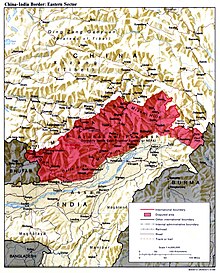


The hill tribes of Northeast India[a] are hill people,[b] mostly classified as Scheduled Tribes (STs), who live in the Northeast India region. This region has the largest proportion of scheduled tribes in the country.
Northeast India comprises Assam and part or all of the former princely states of Manipur, Tripura and Sikkim.
There are areas of plains in the modern State of Assam, but otherwise the region is mostly hilly or mountainous. The hills have long been populated with Tibeto-Burman (a branch of Sino-Tibetan) hill people, some of whom originate in other parts of the Himalayas or of Southeast Asia.
There are many distinct groups with unique languages, dress, cuisine and culture.
The British made little effort to integrate the hill people into British India, but governed through a system of village chiefs and headmen.
In some areas, educated elites pushed for greater autonomy for the hill people within the state of Assam, and obtained some autonomy at a district level after Indian independence in 1947. In response to attempts by the Assamese majority in the plains to impose their language, the hill people began to struggle for yet more autonomy as separate states within the Indian Union, which they largely achieved.
Today, the hill people have political control in most of the new hill states surrounding Assam, although plains people control parts of the economy. There are continued tensions between the hill people and plains people, and also tensions between different hill peoples in each hill state. Violent insurgent groups continue to cause many fatalities.
Cite error: There are <ref group=lower-alpha> tags or {{efn}} templates on this page, but the references will not show without a {{reflist|group=lower-alpha}} template or {{notelist}} template (see the help page).
